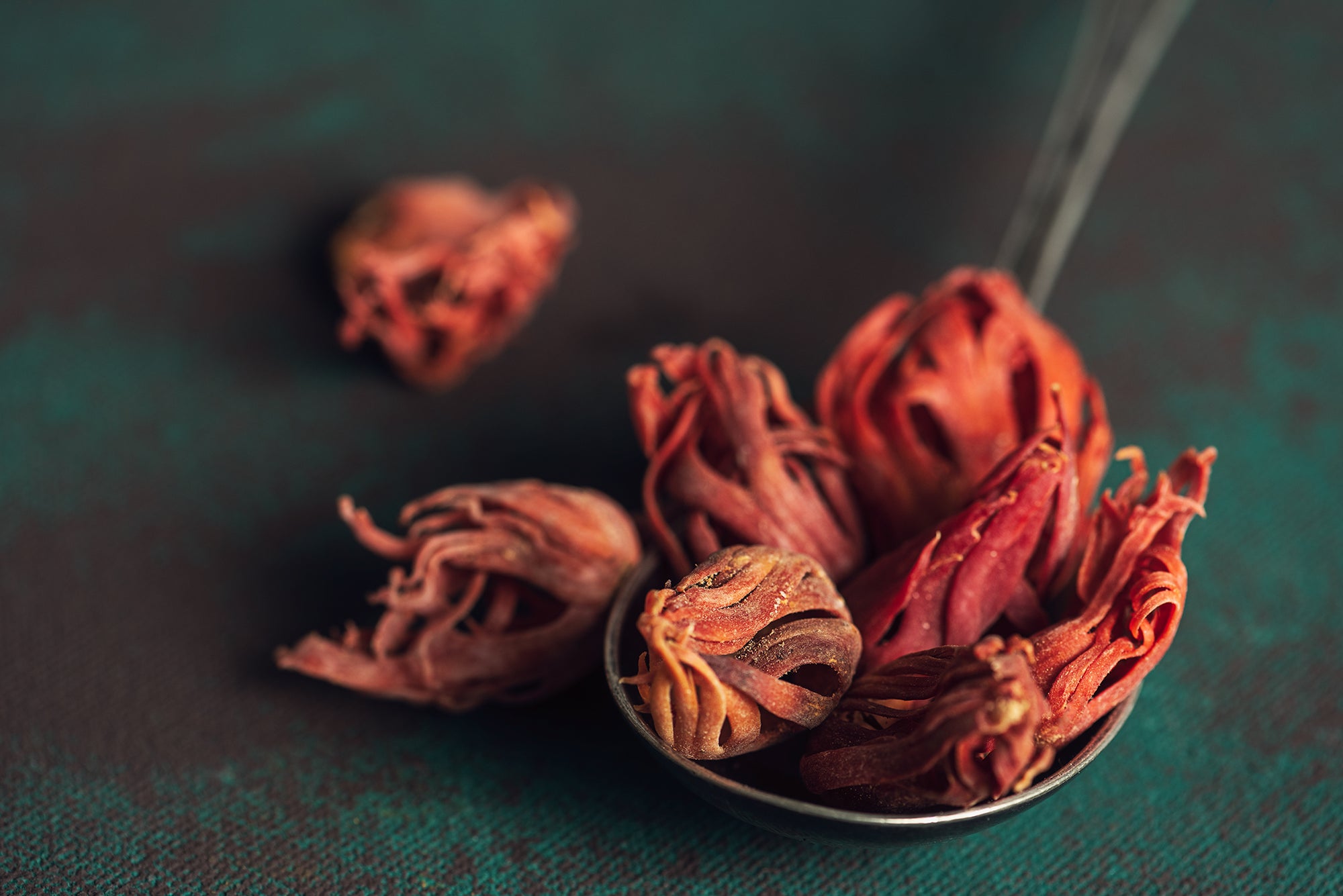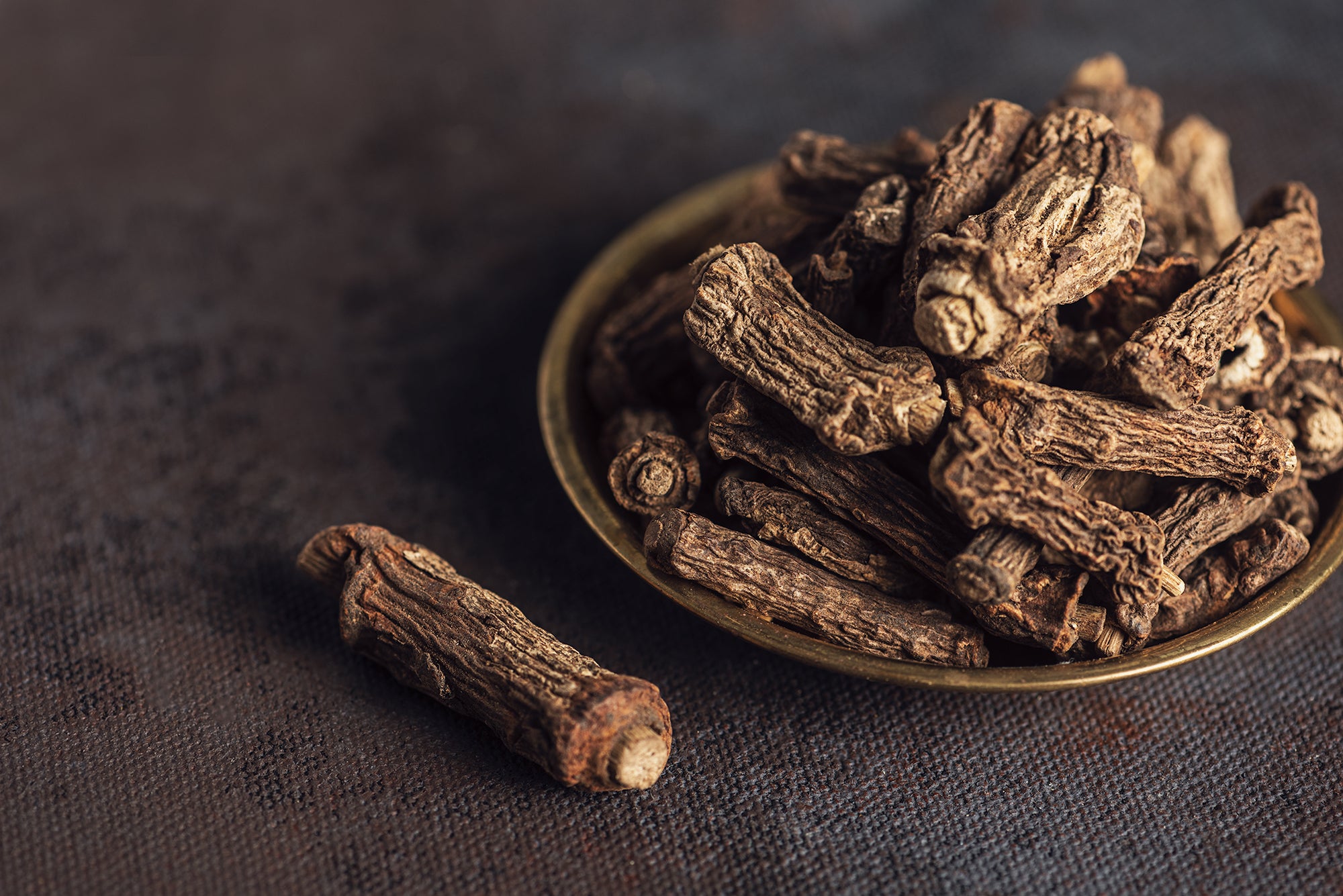Native to Europe and Asia, Licorice is the sweet root of the Glycyrrhiza plant. Valued for its flavor, licorice is believed to help with overall vitality of health and has been used in traditional Chinese medications for thousands of years.
In fact licorice is about fifty times sweeter than white sugar.
Growing Licorice
Licorice is a perennial herb that can grow to up to 1.2 m in height. With long woody stems and compound leaves, licorice plants also have pale blue flowers and bear pod like fruits that contain seeds inside.
The plant thrives in a dry cold climate on fertile soils. They are propagated using stem cuttings. These cuttings start to sprout in about 15-20 days and the plan is ready for harvest in about 3 years. The roots are harvested in winter, once done they are sorted, cleaned and then dried in the sun for 2-3 days and then in the shade for about 10-12 days. The dried roots. There should be less than 10% moisture in the roots for them to be cut into convenient sizes, graded and packed.
Sweet Benefits
The first thing that comes in everyone’s mind when they hear the term ‘licorice’ is ‘candy’. Most of the time the ‘candy’ licorice found these days are not made from the true roots. In fact licorice has more to offer on the health front than being just another confectionary.
It is believed that the Greek used Licorice to help treat respiratory problems. Licorice also plays a vital role in ancient Chinese medications, believed to reduce the toxicity in other elements. The Japanese use it for regulating menstrual cycles
Research shows, licorice can be of great use to get relief from skin irritations caused due to eczema. It can also be used to treat peptic ulcers, hepatitis B and C and respiratory infections.
But, licorice is not recommended for long term or continuous usage. Excess consumption of licorice will reduce the potassium levels in the body and cause sodium retention. Those with high blood pressure or kidney issues and pregnant women should avoid consuming this sweet root.
Ayurveda And Licorice
Known as Yashtimadhu, meaning ‘sweet root’, licorice is a sweet cooling root. It balances vata and pita and has been used since ancient times in Ayurveda.
Despite being sweet, it is said to be and excellent blood sugar levels monitor and has been a part of many home remedies.
Being an excellent anti inflammatory and analgesic agent, licorice can be used to treat osteoarthritis, stomach infections, sore throat, hyperacidity, stomach ulcers and more.
It can also help in regulating menstrual cycles, prevent premature greying of hair, reduce dark spots and blemishes from the skin and reduce abdominal fat.
Dried licorice powder can be mixed with warm water and consumed. For topical application it is preferred to make syrup out of this.
But like all everything, licorice too should be consumed in measured quantities.
We have used Licorice in:
Quick Facts
| Name: | Licorice |
| Scientific Name: | Glycyrrhiza glabra |
| Cultivated in: | Asia and parts of Europe |
| Other names: | Mulethi |
| Habitat | Dry cold temperature |
| Soil | Rich forest soils, sandy loam soils |
| Aroma | Anishe seed, earthy |
| Plant parts used | Roots |
Known As In
| Hindi | Mulethi, Mithilakdi |
| Marathi | Jeshtamadhu |
| Telugu | Atimadhuramu |
| Gujrati | Jethi Madh |
| Bengali | Jashtimadhu |
| Malayalam | Itarttimadhuram |
| Tamil | Atimadhuram |
| Kannada | Jeshtamadhu |
Ayurvedic Facts
| Sanskrit Name: | Yashtimadhu |
| Taste: | Sweet |
| Energitics: | Cooling |
| Effect on Doshas: | Balances vata and pita |
| Used for Treating: | Eczema, Irredula menses, Addison’s disease, Earache, Stomach ulcers, constipation, skin irritations |





.png?v=1668878203)



